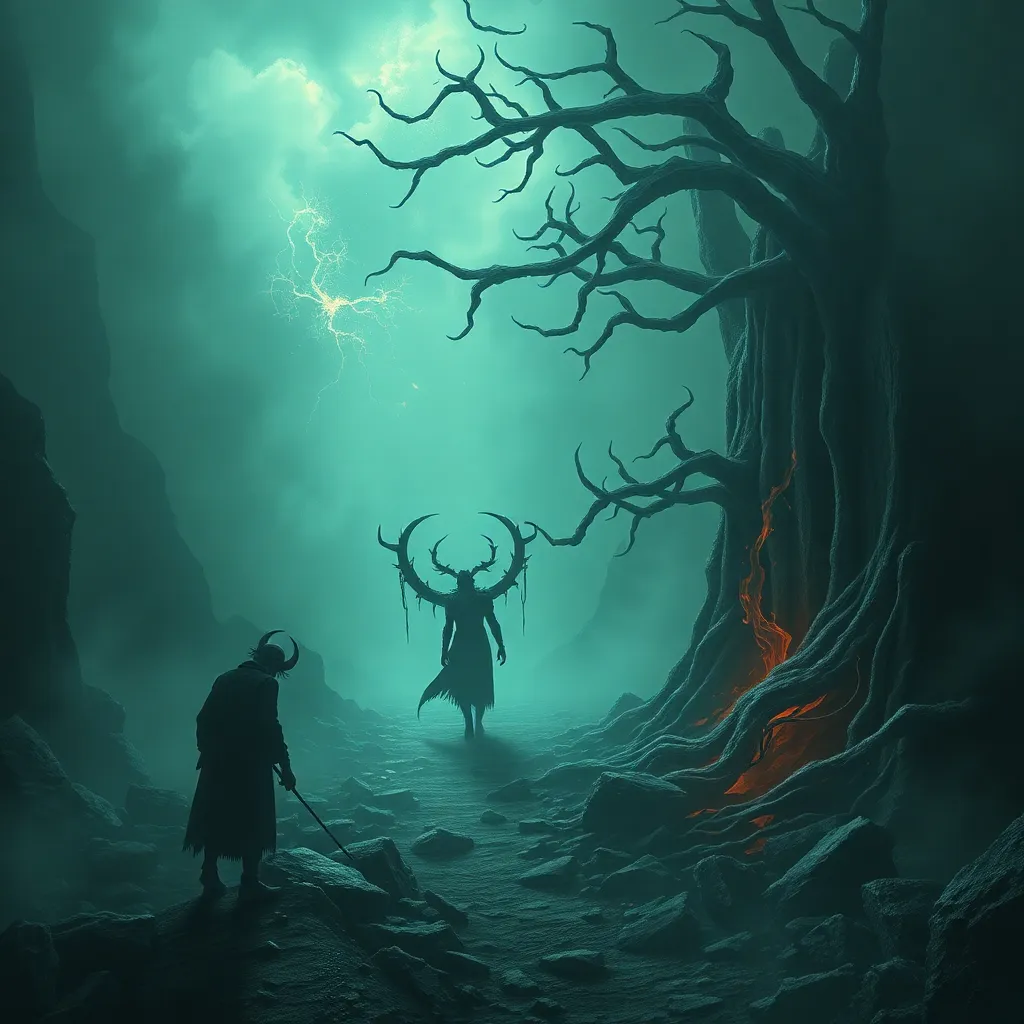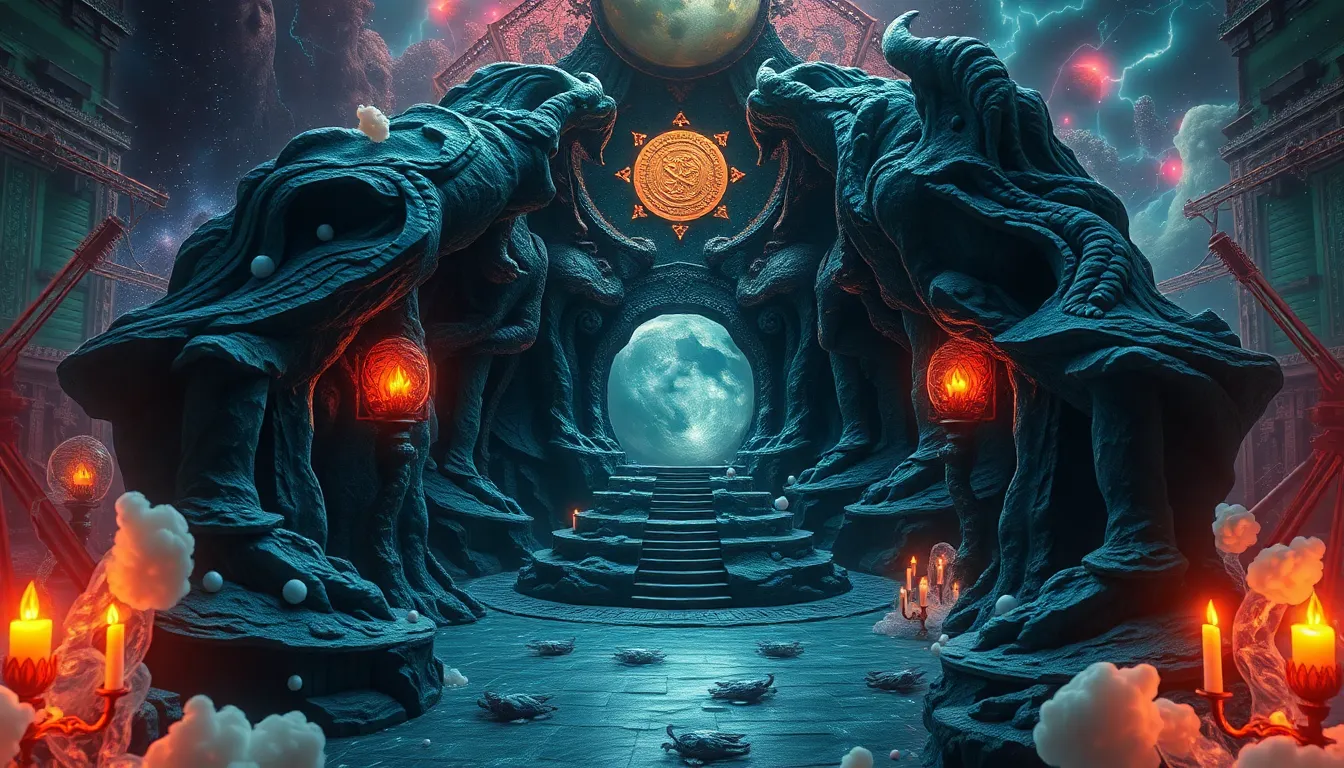The Strigoi’s Journey: Exploring the Fate of the Undead in the Afterlife
I. Introduction
The Strigoi, a fascinating figure in Romanian folklore, embodies the complex and often dark themes surrounding the undead. Defined as restless spirits or the reanimated dead, Strigoi are steeped in a rich tapestry of myths that resonate not only in Romania but across various cultures worldwide. This article delves into the Strigoi’s afterlife journey, exploring the cultural significance and the beliefs surrounding these enigmatic beings.
II. Historical Context of the Strigoi
The origins of the Strigoi myth can be traced back to ancient Romanian traditions, where they were often associated with witchcraft and the supernatural. Initially, Strigoi were thought to be the spirits of the dead who returned to haunt the living. Over the centuries, these legends evolved, influenced by historical events, societal fears, and the merging of different cultural beliefs.
- Origins: Early accounts describe Strigoi as souls who could transform into animals and were believed to possess magical powers.
- Evolution: As Romania faced invasions and cultural changes, the Strigoi legend absorbed elements from other folklore, including vampire myths.
- Comparison: Unlike traditional vampires that thrive on blood, Strigoi are often depicted as tortured souls seeking revenge or closure.
III. Characteristics of the Strigoi
The Strigoi are characterized by a unique blend of physical and supernatural traits that set them apart from other undead beings. They are often described as having a pale complexion, elongated features, and red eyes, giving them a ghastly appearance.
A. Distinction between Strigoii vii and Strigoii morți
In Romanian folklore, a crucial distinction exists between Strigoii vii (living Strigoi) and Strigoii morți (dead Strigoi). The former refers to individuals who possess supernatural abilities while alive, often due to a curse or lineage, whereas the latter are those who have died but continue to haunt the living.
B. The role of blood and life force
Blood is a recurring theme in Strigoi lore, symbolizing life and vitality. Strigoi are often depicted as creatures that drain the life force from the living, which further cements their connection to fear and mortality.
IV. The Strigoi’s Afterlife: Beliefs and Interpretations
Romanian cultural beliefs about death and the afterlife play a significant role in shaping the narrative of the Strigoi. The journey of the Strigoi post-mortem is filled with rich myths and interpretations.
- Cultural beliefs: In Romania, death is not seen as an end but as a transition, with the possibility of the deceased becoming a Strigoi if proper rites are not observed.
- Myths and narratives: Many tales depict the Strigoi as wandering souls seeking revenge for injustices suffered during their lives.
- Symbolism: The Strigoi’s existence in the afterlife symbolizes the unresolved issues of the living, illustrating the connection between the past and present.
V. Rituals and Practices Surrounding Strigoi
To protect against the rise of Strigoi, various rituals and practices have emerged within Romanian culture. These customs are deeply rooted in folklore and serve as a means of safeguarding the living from the undead.
A. Traditional practices to prevent Strigoi from rising
Common practices include:
- Burial with objects to confuse the Strigoi.
- Placing garlic in the coffin or around the grave.
- Performing rituals to bless the deceased and ensure a peaceful afterlife.
B. The role of folklore in modern-day rituals
Even today, elements of these traditional practices persist, showcasing the enduring nature of folklore in contemporary Romanian culture.
C. Community responses to suspected Strigoi activity
Communities often come together to address suspected Strigoi sightings, conducting rituals and gatherings to reinforce cultural ties and shared beliefs.
VI. The Strigoi in Popular Culture
The representation of Strigoi has transcended folklore, making its way into literature and film, influencing modern vampire narratives.
A. Representation in literature and film
Strigoi have appeared in various works, from Bram Stoker’s “Dracula” to contemporary vampire novels, where they often embody themes of fear and the unknown.
B. Impact of Strigoi mythology on contemporary vampire lore
The Strigoi myth has significantly impacted how vampires are portrayed in media, blending traditional elements with modern interpretations.
C. Analysis of Strigoi-themed media and its reception
The fascination with Strigoi-themed media reflects societal anxieties and the enduring appeal of the undead in popular culture.
VII. The Strigoi’s Legacy and Modern Interpretations
The legacy of the Strigoi continues to influence modern vampire narratives, offering a unique perspective on societal fears and cultural beliefs.
A. The Strigoi’s influence on modern vampire narratives
Today, the Strigoi serves as a template for many vampire stories, highlighting themes of immortality, vengeance, and the human condition.
B. Exploration of Strigoi as a symbol of societal fears
Strigoi can be viewed as a manifestation of societal fears, representing the consequences of unresolved conflicts and the darker aspects of human nature.
C. The relevance of Strigoi beliefs in today’s world
Despite modernization, the beliefs surrounding Strigoi remain relevant, offering insights into human psychology and cultural anxieties surrounding death and the unknown.
VIII. Conclusion
In summary, the Strigoi’s journey through the afterlife is a profound reflection of cultural beliefs and societal fears. The enduring fascination with the undead, particularly the Strigoi, continues to spark interest and dialogue in cultural discourse. As we explore the Strigoi’s place in the tapestry of afterlife beliefs, we uncover deeper truths about our own fears, hopes, and the mysteries that lie beyond death.



